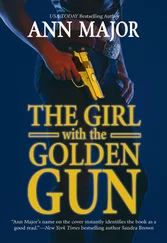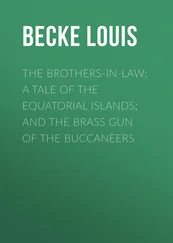Nonetheless, ATF persisted and asked Congress for the $10 million the bureau felt it would need to develop the new computer system.
“We took a beating,” Davis said. “Congress not only didn’t give us ten million dollars. They took ten million dollars out of our budget. So they penalized us for having the gall to initiate these programs. Needless to say, the regulations were withdrawn by Treasury, by the Carter administration, with their tails between their legs.”
And ATF was left to cope with $10 million less in its operating budget.
Nonetheless, ATF still had the benefit of an administration that at least in spirit favored gun control. But Carter wouldn’t be president forever.
During the 1980 campaign, Ronald Reagan made it clear where his sympathies lay. He wooed the NRA with a campaign pledge that if elected president, he would abolish the hated bureau.
The NRA and its powerful allies, including Rep. John Dingell of Michigan and Rep. John Ashbrook of Ohio, both members of the NRA’s board of directors, moved in for the kill. The NRA went so far as to produce a TV documentary called It Can Happen Here , alleging ATF abuses. In the film, Representative Dingell appears and says, “If I were to select a jackbooted group of fascists who are perhaps as large a danger to American society as I could pick today, I would pick ATF.”
What particularly irked the NRA was ATF’s tactic in the late 1970s of sending agents into gun stores masquerading as illegal buyers to see whether the dealers would sell them guns or suggest that they arrange a straw-man purchase. “We were using those kinds of techniques,” Rex Davis said, “because unscrupulous dealers were then, and are now, a major source for the illegal acquisition of guns.” Other agencies used similar sting techniques, but only ATF seemed to catch the heat. “If the guy was a pharmacist selling illegal narcotics,” Davis said, “nobody would scream at all.”
During a 1980 hearing, ATF defended itself by arguing that it had in fact conducted few operations against dealers. Its new director, G. R. Dickerson, testified, “We often hear that ATF makes a practice of harassing licensed dealers in an attempt to drive them out of business. I point out to the committee in the period July 1, 1979, through April 30, 1980… we had over eight thousand seven hundred firearms investigations. Only one hundred and sixty-two involved licensed dealers.”
His testimony confirmed the fears of members of the gun-control camp, who charged that if anything ATF was too soft on dealers. At the same hearing the National Coalition to Ban Handguns presented a survey of 136 licensed gun dealers in New Haven, Connecticut, which found that “more than three-fourths (77.2 percent) of licensees were in direct violation of at least one federal, state, or local law or regulation. Nearly one-half (48.5 percent) were in violation of two or more firearms, tax, or zoning requirements.”
The NRA and its allies kept up the pressure. By September 1981 the NRA seemed assured of achieving the destruction of the bureau. That month, at a meeting of the International Association of Chiefs of Police in New Orleans, President Reagan announced that he planned to fire ATF’s firearms enforcement agents and dissolve the bureau.
The NRA was delighted; Reagan’s audience was not.
Reagan had misjudged the respect accorded ATF and its firearms tracing services by other law-enforcement agencies. A slap against ATF was a slap against all law enforcement.
The administration backpedaled. Reagan still promised to dismantle ATF, but proposed now to shift the firearms agents from the bureau to the Secret Service. Everyone seemed to like this idea, including ATF agents, who, although they would have preferred an outright transfer to the Department of Justice, looked forward to joining a bona fide law-enforcement team and shedding the last vestiges of ATF’s tax-collecting past.
The gun lobby now balked at the idea.
At a February 1982 hearing before a subcommittee of the Senate Appropriations Committee, Representative Dingell reiterated his “jackboot” statement word for word. Of ATF, he said, “I think they are evil.” He warned, however, that shifting the bureau’s agents to the Secret Service “is a little like rearranging the deck chairs on the Titanic .” He charged that “the transfer of BATF to other agencies affords only the certainty that other agencies will be contaminated by the kind of people and behavior we have seen on the part of BATF.”
The Gun Owners of America testified that the proposed transfer might make things worse than they already were “if the extraordinary powers available to the Secret Service were ever made available to the one thousand former firearms agents at BATF.”
Neal Knox, head of the NRA’s chief lobbying arm, the Institute for Legislative Action, testified that most of the “provisions of the Gun Control Act are purely regulatory in nature; they should be administered by a regulatory agency and not by a criminal law-enforcement organization.” The NRA, he said, believed ATF should remain a freestanding agency under the Treasury Department.
The NRA’s turnabout prompted Rep. William J. Hughes, chairing a House hearing on May 4, 1982, to chide, “In the confusion, the National Rifle Association, apparently with a straight but somewhat reddened face, has been able to publicly change its position and is now in the unlikely role of supporting the continuation of BATF, on the grounds that the Secret Service, to which most of BATF’s functions were to be transferred, might actually take the functions seriously and not be so easy to intimidate,”
The NRA, according to author Osha Davidson, suddenly saw that the shift to the Secret Service would indeed enhance ATF’s prestige. “The NRA realized,” he writes, “that it wouldn’t be able to call Secret Service agents ‘jackbooted fascists’ and get away with it.”
The bureau survived, but the dangers of aggressive, proactive investigation were imprinted forever in its institutional memory. “Some of the things we did were probably not the best techniques,” said Bernard La Forest, a veteran agent and special agent in charge of ATF’s Detroit office. The bureau, he said, took its lesson to heart: “Before you conduct an investigation of a licensed dealer, you better have some pretty good proof that there’s a high probability he’s engaged in some type of illegal activity.”
Throughout the 1980s, the NRA continued its fight to restrict ATF’s powers over dealers. In May of 1986, again with the help of powerful congressional allies, most notably Sen. James McClure of Idaho and Rep. Harold Volkmer of Missouri, the NRA succeeded in muscling through the McClure-Volkmer Act, also known as the Firearms Owners’ Protection Act. A more appropriate title might have been the Gun Dealers’ Protection Act. The bill banned the sale and manufacture of new and hitherto unregistered machine guns, thanks to a last-minute amendment added by Representative Hughes, but it eliminated a previous requirement that gun dealers keep records on ammunition sales. It also explicitly barred any central registry of dealer records, limited dealer inspections to once a year and only after advance notice, allowed the interstate sales of rifles and shotguns, gave private gun owners more leeway to sell guns without first acquiring a dealer’s license, and, perhaps most important in terms of understanding ATF’s treatment of Guns Unlimited, required prosecutors to prove that dealers charged with violating firearms laws did so “willfully.”
It was this bill too that reduced to a misdemeanor the penalty for dealers found to have violated record-keeping rules, while retaining the felony charge for consumers who did likewise.
Читать дальше
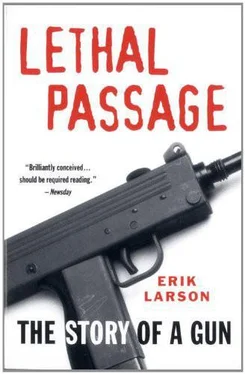
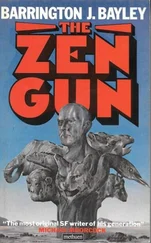


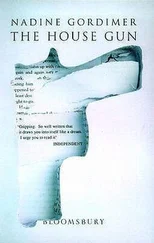



![Ричард Деминг - Whistle Past the Graveyard [= Give the Girl a Gun]](/books/412176/richard-deming-whistle-past-the-graveyard-give-t-thumb.webp)
